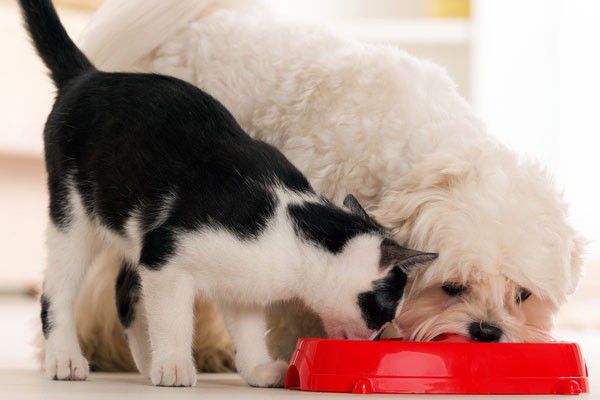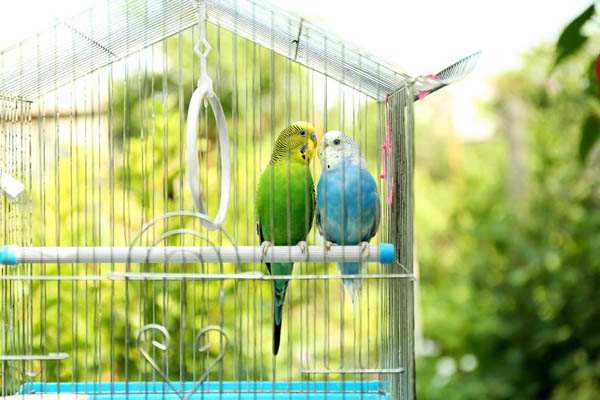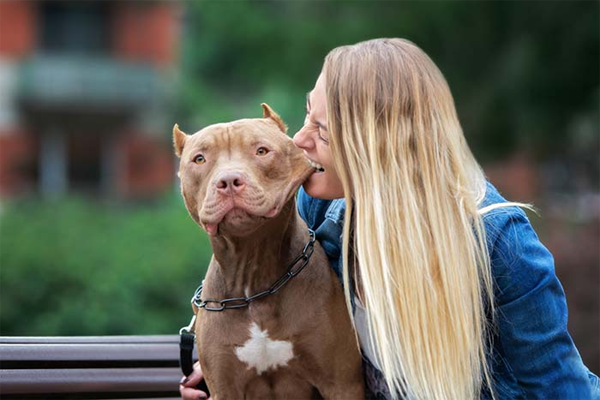
Discover effective strategies to feed cats and dogs together under one roof. Learn how to create a peaceful mealtime environment and establish healthy eating habits for your furry friends. Expert advice and practical tips await you in this comprehensive guide.
Living with both cats and dogs can be an incredibly rewarding experience, but it also presents its fair share of challenges, especially during mealtime. Each pet has its own dietary preferences, behaviors, and feeding routines. In this article, we will delve into practical and proven techniques to ensure a harmonious mealtime for your feline and canine companions.
Tips On How To Feed Cats And Dogs In The Same House
Feeding Schedule Synchronization
It’s crucial to establish a consistent feeding schedule that works for both your cat and dog. Cats often prefer multiple small meals throughout the day, while dogs generally thrive on two main meals. Align their feeding times to prevent conflicts and establish routine.
Separate Feeding Areas
Create distinct feeding areas for your cat and dog. Cats appreciate privacy while eating, so place their bowls in quiet, elevated spots. For dogs, choose a separate spot, ensuring enough distance between the two areas to avoid territorial behavior.
Choose Appropriate Food
Selecting the right food for each pet is essential. Cats are obligate carnivores, requiring protein-rich diets, while dogs have more varied dietary needs. Consult your veterinarian to determine the most suitable foods for both your cat and dog, considering factors like age, breed, and health conditions.
Use Elevated Feeders
Elevated feeders can be beneficial for both cats and dogs. They promote better digestion by reducing strain on their necks and promoting a healthier posture. These specialized feeders also discourage sharing of bowls, minimizing the risk of tension.
Gradual Introduction
When introducing a new pet to your household, take gradual steps to familiarize them with each other’s presence. Start by allowing them to sniff around closed doors and gradually progress to supervised interactions. Positive associations with each other can lead to peaceful coexistence.
Controlled Feeding Time
Limit the feeding time for both pets to around 30 minutes. This encourages them to eat promptly and reduces the likelihood of food guarding behaviors. Remember to remove any uneaten food to prevent overeating and maintain hygiene.
Positive Reinforcement
Reward both your cat and dog for good behavior during mealtime. Offer treats and affection when they exhibit calm and cooperative behavior around each other’s feeding areas. Positive reinforcement encourages a positive mealtime atmosphere.
Monitor Interactions
Observe your pets during their meals to ensure that neither exhibits aggressive or dominant behavior. If tensions arise, address the issue immediately by using distractions or separating them temporarily. Seek guidance from an animal behaviorist if needed.
Rotate Meal Locations
Occasionally swap the feeding areas of your cat and dog to prevent territorial behavior. This helps both pets become accustomed to sharing spaces and resources, reducing the likelihood of conflicts.
Separate After Meals
After their meals, separate your cat and dog for a short period. This prevents potential food-related competition and gives them a chance to relax after eating.
Puzzle Feeders and Toys
Engage both your cat and dog during mealtime by using puzzle feeders and interactive toys. These tools provide mental stimulation and divert their attention away from each other, reducing the chances of confrontations.
Specialized Diets
If your pets have specific dietary requirements, consider specialized diets that cater to their individual needs. Consult with your veterinarian to determine the best options for your cat and dog.
Consistent Training
Training plays a vital role in fostering a peaceful mealtime environment. Teach your pets basic commands like “stay” and “leave it,” which can help control their behavior around food and prevent conflicts.
Gradual Socialization
If your cat and dog are new to each other, allow them to interact in a controlled manner. Use leashes and provide positive reinforcement for calm behavior. Gradually increase the duration of interactions as they become more comfortable.
Scheduled Playtime
Engage both your cat and dog in scheduled play sessions. Physical activity helps them release excess energy, making them more relaxed during mealtime and reducing the chances of confrontations.
Hydration Stations
Provide separate water stations for your cat and dog. Cats prefer still water and might be deterred by a dog’s exuberance around a shared water bowl.
Peaceful Environment
Create a calm and peaceful environment during mealtime. Reduce loud noises and distractions that could trigger stress in either pet. Play soothing background music to set a serene atmosphere.
Respect Individual Preferences
Understand that your cat and dog have unique personalities and preferences. While one might prefer solitude during meals, the other might enjoy company. Adapt your strategies based on their individual needs.
Professional Guidance
If conflicts persist or escalate, seek help from a professional animal behaviorist or veterinarian. They can provide personalized strategies and advice tailored to your pets’ specific dynamics.
Multi-Pet Household Etiquette
Teach your pets manners for living in a multi-pet household. Encourage polite behavior through training and positive reinforcement, promoting a harmonious living environment.
Quality Time Separately
While it’s important for your pets to coexist peacefully, also dedicate quality one-on-one time with each pet. This strengthens your bond and ensures they receive individual attention and affection.
Understanding Body Language
Become well-versed in the body language of both cats and dogs. This enables you to intervene before conflicts arise and promote healthy interactions.
Regular Vet Check-ups
Schedule regular veterinary check-ups for both your cat and dog. Monitoring their health ensures they are fit for any dietary changes and helps identify and address any medical issues promptly.
Patience and Consistency
Above all, practice patience and consistency. Building a harmonious mealtime routine for your cat and dog requires time and effort. Be consistent in your approach and celebrate each small step towards success.
FAQs
Can I feed my cat and dog the same food?
Feeding the same food to your cat and dog is not recommended. Cats and dogs have different nutritional requirements, and feeding them the wrong food can lead to health issues. Consult your veterinarian for appropriate dietary choices.
How do I prevent my dog from eating the cat’s food?
To prevent your dog from eating the cat’s food, establish separate feeding areas. Place the cat’s bowl in an elevated, quiet spot that’s inaccessible to the dog. This minimizes the chances of food theft.
Should I free-feed my pets?
Free-feeding, where food is constantly available, is generally not recommended for cats and dogs in the same household. Controlled feeding times promote a healthier routine and prevent food-related conflicts.
What if my cat and dog don’t get along during mealtime?
If your cat and dog show signs of aggression or tension during mealtime, consider feeding them in separate rooms. Gradually reintroduce them with controlled interactions and positive reinforcement.
Can I train my pets to eat together peacefully?
Yes, with patience and training, you can teach your pets to eat together peacefully. Start with short, supervised sessions and reward calm behavior. Gradually extend the duration of their interactions.
Is it normal for my pets to share water?
While sharing water might not be a major issue, some cats might prefer separate water sources due to their sensitivity to motion. Provide multiple water stations to ensure both pets stay hydrated.
Conclusion
Feeding cats and dogs in the same house requires thoughtful planning, patience, and understanding of each pet’s needs. By following these expert tips and strategies, you can create a harmonious mealtime routine that fosters a peaceful coexistence between your furry companions.




